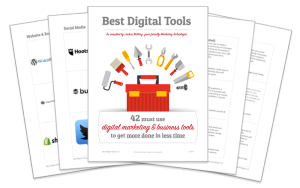It’s easy to get drawn in by the siren songs of CRM (contact relationship management) tools. They promise greater efficiency, better data, and best of all, more sales – who doesn’t want that?
But many startups and small businesses stumble when getting started with a CRM. Analysis paralysis can prevent them from getting started, or else they struggle to use their new system after implementation. Ultimately – as with any tool – it takes planning, execution and consistency to truly reap the benefits.
This Q+A with Joshua McNary will cover where to start, how to choose a CRM, and favorite recommendations. Make sure to check back next month for CRM 201 – how to truly make the most of your new system and keep it running smoothly over time.
First things first, what is CRM?
A CRM is a contact relationship management system – it’s really any platform or tool you use to keep track of the people in your life or in your business. A simplistic CRM is your contacts in email or Google. It could be a spreadsheet, keeping track of people’s information. Or it could even be a mail program you use, MailChimp or Constant Contact could be a CRM in a sense.
But traditionally when we say CRM we really mean a platform that specifically helps you keep track of people in a sales cycle, in a lifespan of a prospect that’s getting to some end goal. It could be someone buying a big expensive product or service it could be a list of the orders they’ve made over time, or it could be someone getting in touch with a nonprofit, and eventually they become a donor. All of these different lifecycles, it’s tracking all the contact that’s happening and helping you weed through that, so you can identify what are your next actions in pushing them through your lifecycle, whatever you’re trying to sell, persuade, or influence.
It seems like CRM is intimidating for people – why is that?
Some people don’t know they need it – they’re just dealing with emails and phone calls coming in, and they’re managing it ad-hoc. Their email inbox ends up becoming a task list. In certain scenarios, if you’re not pushing a lot of volume, that might be all you need.
Even simple scenarios, say you’re a consultant and you have just a few clients, having a tool in place to manage those contacts will give you the ability to be more efficient. To understand ‘I last contacted this person three weeks ago, I should follow up,’ even simple things like that can be difficult to do without a tool helping you. And the best CRM tools have those features built right in.
Then of course, you have the growing small businesses, mid-size businesses and enterprise businesses that are more mature, have multiple sales people…that’s when CRMs especially start becoming more intimidating.
Where do you start?

Defining your lifecycle points and your sales funnel. I think that’s why there’s intimidation around these tools. You can sign up for any CRM right now, and just start using it – it might help you a little, but it will probably just confuse you or add more complexity to your life unless you go into it with a plan. Some of the best ones help you with that plan out as you go.
My approach, typically, is to first look at what you’re trying to achieve.
- What are your funnels?
- Who are the people coming into your sphere of influence?
- How do we move them through your sales cycle?
- Where are the drop-off points?
- How do we work this into our current systems and workflows?
You need to think through all that, it’s very unique to a business, and it takes some serious thinking.
These systems are often sold as sort of silver-bullet fixes, but when you want to do this right, you need to think through those questions.
Do you have any CRM recommendations?
I use Pipedrive, I went for that as a small business without some of the enterprise needs. They kind of walk you through it, just by the way they designed the software, to help you develop your process.

For solopreneurs, small businesses, or even mid-size businesses that are looking to get started cheaply and efficiently, I usually recommend Pipedrive, Hubspot CRM or Zoho CRM.
They all have unique features, and they also allow you to get started without having all the logic set up at the beginning. You might even spend some time testing them, or task someone with administering it and getting it going, and then as you see how it works, you can see how your business maps on top of it. That way you don’t have to have the full gameplan up front – you should at least have an idea, a whiteboard sketch – but then you can just start by exploring the tool. And then figure out the details.
So even if you don’t know every step along the way to where you want to go, you should at least have a general direction. Unfortunately a lot of businesses don’t take the time to do that – it’s kind of an important but not urgent problem.
To be continued…
Join us next month for more advanced CRM tips to turn you into a super-user (hint: sign up for McNary Marketing and Design eNews to make sure you don’t miss it). In the meantime, we challenge you to map out your sales or influence lifecycle using some of the questions above. Want help? Contact Joshua to talk through your business goals.
